A N D R E S P Ä Ä B O
w w w . p a a b o . c a
MORE: How "Algonquin
Pond" was created
(To return to launch page, click "Return" button at bottom)
THE FINAL PAINTING
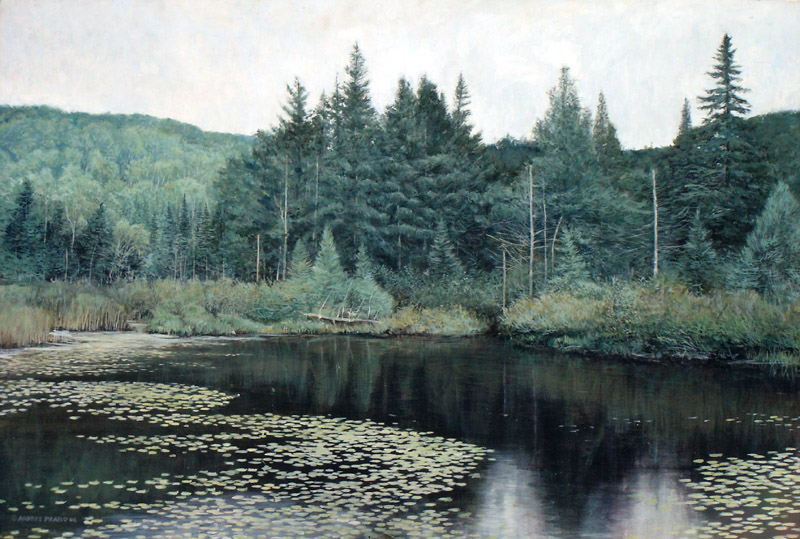
This approach approaches the image from blurry to sharp. It is the traditional impressionistic approach per Group of Seven, Robert Bateman, etc. (The other approach to realism paints the image sharply from the start, working from one corner outward following pencil outline, The latter approach cannot accomodate emotion in the technique and looks flat up close like photo grain.)
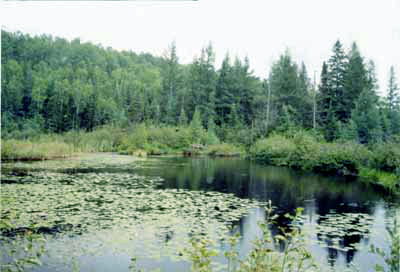
A photo of the location. Note below how the painting organizes everything for an aesthetic look.
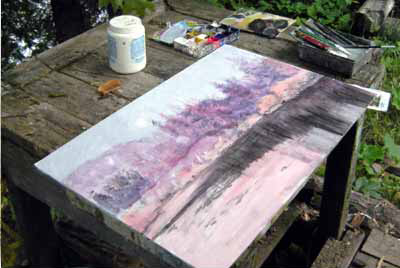
Purples and reds are put into the background because shadows tend to be purplish
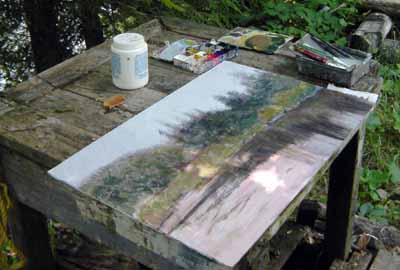
greens are added on top to come forward
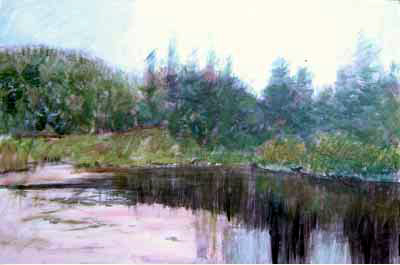
At this stage the scene is roughly organized and balanced
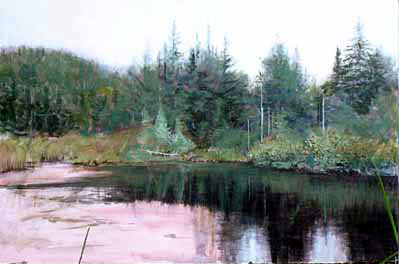
Above done on day one. About the same time it takes to make a small landscape.
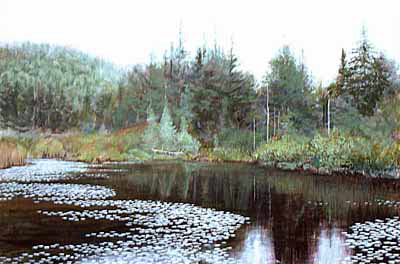
Above done on day two.
Most of the time will be spent painting details and making the blurry scene become sharp. The purpose now is to keep developing detail in order to show the viewer more and more when viewed up close. Lighter colours come forward
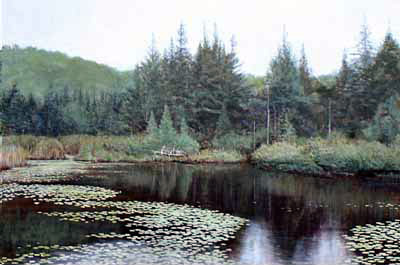
painting the detail takes several days. Then 80% of the time will be taken up in detailed work to remove the rough initial treatment and look interesting up close
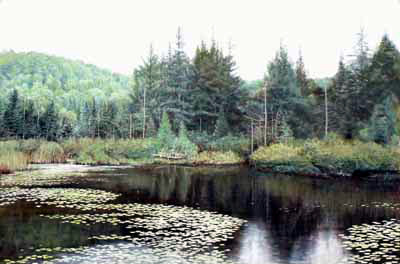
continued painting details for several days. It is like painting about six small 8x10 paintings at the same time
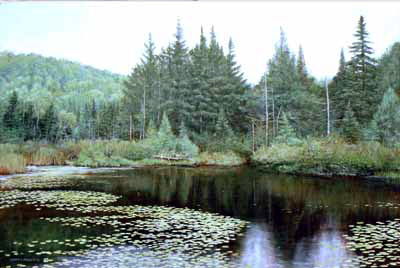
finally everything is touched up to look neat and finished and interesting up close. The viewer should enjoy the painting even when at arm's length away from it.
Comment: This blurry-to-sharp approach looks the same from a distance as the more mechanical approach, but looks more alive up close because the brush strokes vary with the artists emotion towards what he/she is painting
<<<
Return
LAST UPDATE MAR. 2021 (c) A.Paabo